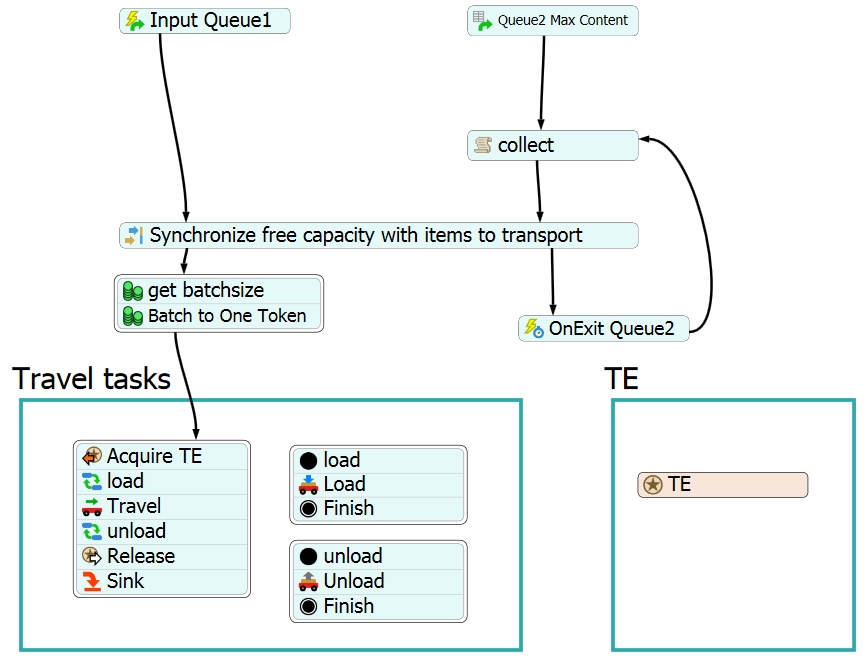22937-22932-acquireresource-ms.fsm
As shown in below image I need to set Task Executer2 capacity to be dynamic based on Queue3 content.
I need to maintain Queue capacity to be 3. If Queue3 content is 1 then Task Executer2 should deliver 2 items. If Queue3 content is 2 then Task Executer2 should deliver 1 item. How to achieve this in my model.
I am attaching my model for your reference.


